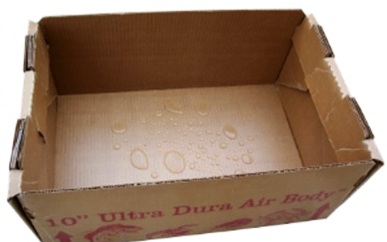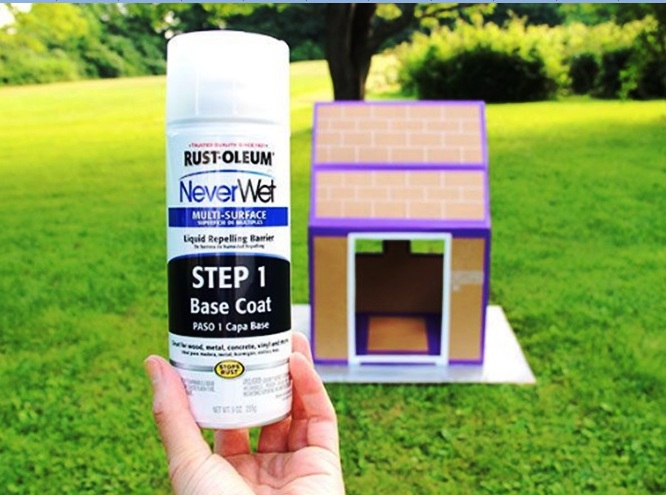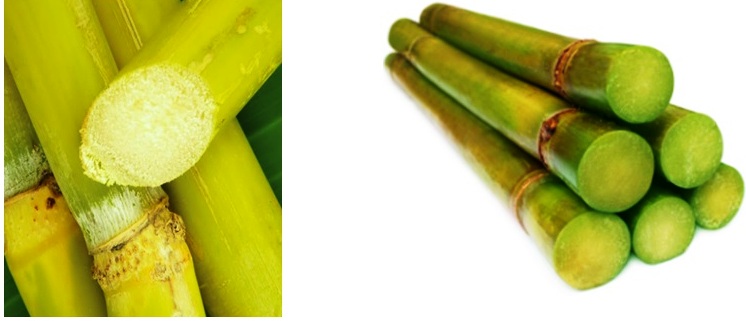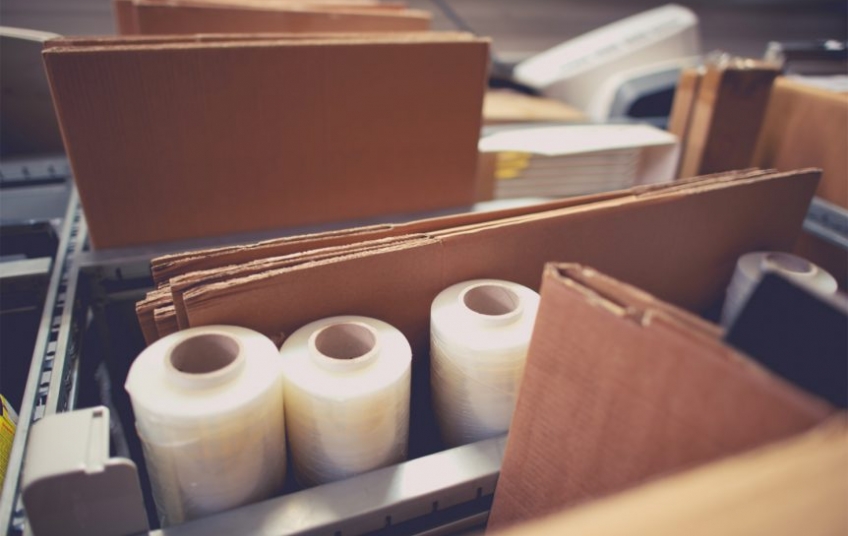
As we all know cardboards are made from paper, and thus it is liable to be influenced or harmed by water. When cardboard is continually in contact with water it causes the cardboard to become soggy and easily breakable. According to “Making Cardboard Waterproof” by Alex Burke, in order to expend the capability of cardboard and to fulfill water-resistant requirements from customers, manufacturers have created various ways of applying a waterproof coating to their products. Examples include laminating cardboard with a plastic film, curtain coating (spraying), impregnating a wax coating or using a method called cascading, which drenches the cardboard with a hot wax substance. Wax is a petroleum-based product.
When in the process of wax impregnation all pieces of the cardboard do not need to be drenched in the wax substance. For example, a rigid cardboard is made up of at least three other pieces of board. In the case of a rigid cardboard, the parts that most likely will need the wax are the outer flat sheets of the board. According to Alexa Burke the melted wax is poured onto the piece of cardboard. This method of pouring wax directly onto the cardboard is called The Wax Cascading Method. The wax can be poured over the cardboard as it passes through the assembly line in a vertical manner, allowing the wax to pass through the rigid layers and also the exterior flat sheets of the board, which will eventually cover more of the board. There is also another method that goes a step even further than just wax cascading. The method of wax dipping, which the board is submerged in the wax solution. The finished product becomes resistant to water and thus the cardboard last longer and maintains its strength capacity.

Some other techniques to waterproof cardboard is through the process of laminating. In most cases, when doing the process of laminating, only one side of the ridged cardboard is laminated, which it does not allow full protection from water or an enviroment that has humidity. Since the film being laminated is usually a low density polyethylene. When it comes to laminating, the cardboard is sprayed. Also there are other type of lamination that can be applied to the cardboard box depending on the need. For example vapor corrosion inhibitors can be sprayeed on the cardboard to protect from water as well as from metal items contained inside the cardboard.
The more we advance the more ways we will come up with to better protect cardboards against harsh weather conditions. According to “Making Cardboard Waterproof” by Alex Burke, there have been recent developmens in the waterprofing cardboard industry, the development of a biodegradable waterproof coating made from the pulp of sugar cane. This new development could change the face of a paper coating industry. The process involves removing the cellulose from the sugar cane and putting it through a state of agitation. Which is a process in which an agent causes an organic substance to break down into simpler smaller substances. Also this process perserves the lignin, which is the waterproof part of cellulose. Alex Burke also states that the paper making methods destroyed the waterproof characteristics of lignin in tree-based paper pulp. However, the new process would allow people to recycle any treated cardboard, which is not possible with standard coated board. This new process would not only help the cardboard industry better protect their products but it would be a huge reduction in the billions of tons of harmful cardboard waste found in landfills worldwide. We would be taking better care of our planet and better improving our ways to make cardboard water resistent.

References:
Burke, Alex. “Making Cardboard Waterproof.” EHOW. N.p.,1999.Web. 17 Mar. 2017. http://www.ehow.com/how-does_5063510_making-cardboard-waterproof.html.
Waterproofing Corrugated Container. 16 March 2017.Packcon, Memphis. By Ngan Nguyen.
How to Make A Weatherproof Cardboard Box Fort. Unknown. Pinterest, Memphis. By Ellen Foord.
Sugar Cane Technology Mobilizes South America. 12.02.2014. Voestalpine. By Thais Kohn.


































